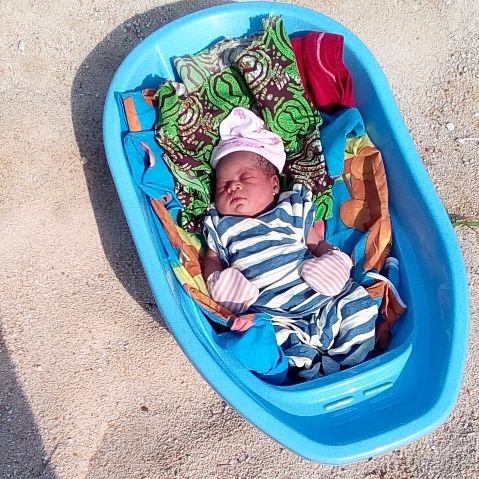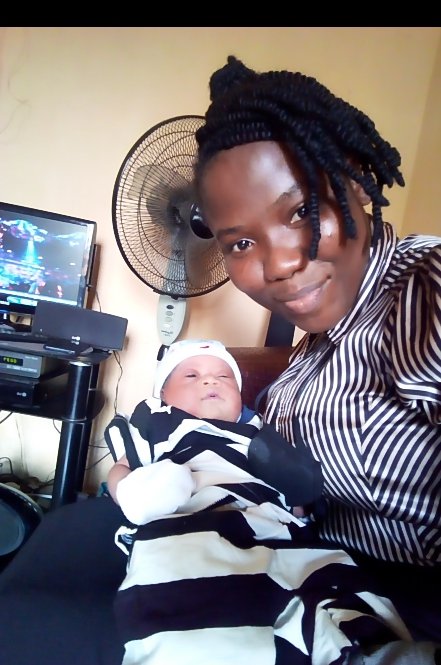So before start, i'd love to introduce myself, I am Glory by name, the first daughter and child in the family of four, this is my first time posting here and I hope I am welcomed?
So let's begin, I actually went to visit my sister that just gave birth and I saw her baby placed under the sun, she was undressed but wrapped in a wrapper and i was imagining what happened to the child, at first I was scared but later on when I was told what happened to the little baby I had to calm down. I immediately remember how my mother bought a florescent bulb specifically blue colour and place my little sister under it that's since 2003 when she was born, I was told she had Jaundice, so unseeing my little baby cousin placed under the sun I just suspected it will be the same Jaundice.
Now as a woman conceives she is advice to treat malaria, but the malaria drugs has to be prescribed by the doctor since by now everything she takes is going directly to the unborn child in her womb.
She is asked to do this to protect the baby from having jaundice when born.
Most times even after treating malaria the unborn child when brought forth tends to have a little of jaundice.
This jaundice will cause yellowing of the eye, some mothers that are unaware of this tends to be so sacred when the notice this but over here in Nigeria, Akwaibom state precisely we have a natural way of treating it and it works for us.
Medically the mothers of the affected children or child could be asked to keep or place the child under the early morning sun for quite sometime, precisely from 7am to 10am this day morning sun helps in decoloration of the yellowish eye again it gives the child vitamin
Other facts about Jaundice that may interest you.
-
Jaundice shows up in babies as a yellowish tinge to the skin and eyes.
-
Jaundice is very common in newborn babies – about six out of 10 newborns have jaundice to varying degrees.
-
Jaundice is caused by an excess of a chemical called bilirubin.
-
Most jaundice is ‘physiological jaundice.
-
Physiological jaundice will resolve by itself once the baby's liver is functioning at full speed.
-
In babies where jaundice levels are very high in the days after birth, treatment using blue lights (phototherapy) may be required.
-
Other less common causes of jaundice include blood group differences between mother and baby, haemolytic anaemia, hepatitis and galactosaemia.
Newborn babies are often affected by jaundice, which makes their skin and eyes have a yellowish tinge. Jaundice is caused by a build-up of a chemical called bilirubin in the baby’s blood and tissues. Bilirubin is normally processed by the liver, but a newborn's liver takes a few days to process it, so about six out of 10 newborns have some degree of jaundice. The condition is more common among premature babies. This normal process results in what we call ‘physiological jaundice’.
Jaundice usually appears on the second or third day. If your baby is full-term and healthy, mild jaundice is nothing to worry about and will resolve by itself within a week or so. However, a premature or sick baby or a baby with very high levels of bilirubin will need close monitoring and medical treatments.
Occasionally, underlying blood and liver conditions can also cause jaundice in babies. These conditions include blood group antibodies, haemolytic anaemia, hepatitis and galactosaemia.
Some Symptoms of Jaundice
The symptoms of jaundice in babies depend on the cause and severity, but may include:
-
a yellow tinge to the skin, usually appearing first on the face and scalp
-
a yellow tinge to the white parts of the eyes (sclera)
-
a yellow tinge spreading to the skin of the body (in moderate jaundice)
-
palms of the hands and soles of the feet turning yellow (in severe jaundice)
-
unusual drowsiness
-
feeding difficulties
-
in some cases, light-coloured faeces (poo) and dark urine.
Jaundice can also be caused by a range of other things including:
-
breastmilk – the mother's breasts produce small amounts of colostrum in the first few days after childbirth. Until the milk ‘comes in’, the limited amounts of fluid received from breastfeeding may affect the functioning of the baby's liver. Certain enzymes in breast milk are also thought to contribute to 'breast milk jaundice', a harmless type of jaundice that can last for several weeks. Continue breastfeeding as usual if you have breast milk jaundice
-
Rhesus (Rh) and ABO blood group incompatibilities – when the mother and the baby have different blood groups to each other the mother may produce antibodies that can attack the baby's red blood cells during the later stages of pregnancy. This means that higher than normal levels of damaged red blood cells have to be eliminated from the body, which in turn triggers high bilirubin levels. The baby may be born anaemic and develop severe jaundice within hours of birth
-
haemolytic anaemia – this can be an inherited disorder of the immune system (autoimmune disease), where the baby’s immune system destroys red blood cells. It can also be a complication of other disorders, such as serious infection (sepsis).
There are a whole lot of things to read on Jaundice so if so want to know more about it like the Diagnosis of the cause of jaundice in babies, Treatment for jaundice in babies, then click on the Link and you will be taken down there.
I remain
glotokens
Thanks for engaging mg blog
Originally posted here: https://hive.blog/hive-120078/@glotokens/how-to-treat-jaundice-in-newly-borns


No comments:
Post a Comment